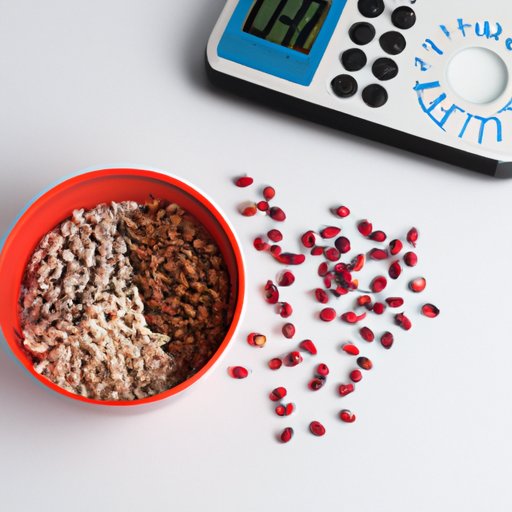
Introduction
If you’re on a weight loss journey, chances are you’ve heard of counting macros. Macro counting involves tracking your daily intake of macronutrients, including protein, carbohydrates, and fats. By keeping track of your macros, you can ensure you’re eating the right balance of nutrients to support your weight loss goals. In this article, we’ll dive into everything you need to know about macro counting for weight loss.
The Beginner’s Guide to Macro Counting for Effective Weight Loss
What are macros and why are they important? Macronutrients are the three main components of our diets: protein, carbohydrates, and fats. Each macro plays a different role in our body, and by tracking our intake of each macro, we can ensure we’re getting the right balance of nutrients to support our weight loss goals. Macro counting fits into a larger healthy weight loss plan by providing a framework for balanced and sustainable eating habits.
Calculating your macro needs can seem overwhelming at first, but it doesn’t have to be. There are many online calculators that can help you determine your macro needs based on your age, height, weight, and activity level. From there, it’s all about tracking your intake and making adjustments as needed.
To get started with macro counting, start by tracking your typical intake for a few days. This will give you an idea of how much protein, carbohydrates, and fats you’re currently consuming. From there, you can start to make adjustments to ensure you’re eating the right balance of nutrients to support your weight loss goals.
The Top 5 Macro-Calculation Mistakes You Could Be Making
When it comes to macro counting, there are some common mistakes that people make that can impact their weight loss progress. One of the biggest mistakes is not accurately weighing and measuring food. Eyeballing portion sizes can lead to inaccuracies in your macro tracking, which can throw off your progress.
Another mistake people make is not adjusting their macro goals as their body changes. As you lose weight and your body composition changes, your macro needs may also change. It’s important to keep this in mind and adjust your goals as needed.
Other common mistakes include not tracking micronutrients, not considering the quality of the foods you’re eating, and not giving yourself enough time to see results.
How to Use Macro Calculations to Personalize Your Weight Loss Journey
One of the most important aspects of macro counting is customizing your macro goals to your individual needs. This means taking into account your fitness level, activity level, and weight loss goals. For example, someone who is more active may need more carbohydrates to fuel their workouts, while someone who is mainly sedentary may need more protein to preserve muscle mass.
It’s also important to make macro counting manageable and sustainable. This means finding a system that works for you and your lifestyle. Some people prefer to pre-log their meals for the day, while others prefer to track as they go. Experiment and see what works best for you.
A Detailed Look at Macronutrients: How to Calculate and Allocate for Effective Weight Loss
Protein is important for building and repairing muscle, while carbohydrates provide energy for workouts and other daily activities. Healthy fats are important for hormone regulation and satiety. When it comes to allocating your macros, there is no one-size-fits-all approach. It’s important to consider your individual needs and goals.
There are many resources available online to help you calculate your macros and create meal plans based on your goals. It’s important to remember that your macro goals should be seen as guidelines, and not strict rules. Be flexible with your eating and focus on making healthy choices.
The Best Macro-Tracking Apps for Achieving Your Weight Loss Goals
Tracking your macros can be made much easier with the help of apps. Popular macro-tracking apps include MyFitnessPal, Lose It!, and MacrosFirst. Each app has its benefits and drawbacks, so it’s important to choose one that works best for you.
These apps allow you to log your meals and track your macro intake throughout the day. Some apps also have a barcode scanner feature, which makes tracking macros even easier.
Maximizing Your Macro Counting: Expert Tips and Tricks for Greater Weight Loss Success
To get the most out of macro counting, it’s important to seek advice from experts. Personal trainers and nutrition experts can help you adjust your macronutrient goals based on your progress and provide tips for making macro counting more enjoyable and manageable.
It’s also important to stay motivated and focused on your goals. Surround yourself with people who support your weight loss journey, and celebrate your progress along the way. Remember, sustainable weight loss is a journey, not a destination.
Conclusion
Macro counting can seem overwhelming at first, but by following these tips and tricks, you can make it a manageable and sustainable part of your weight loss journey. Remember to customize your macro goals to your individual needs, track your progress consistently, and seek advice from experts when needed. With dedication and consistency, macro counting can help you achieve your weight loss goals and build healthy eating habits for life.




